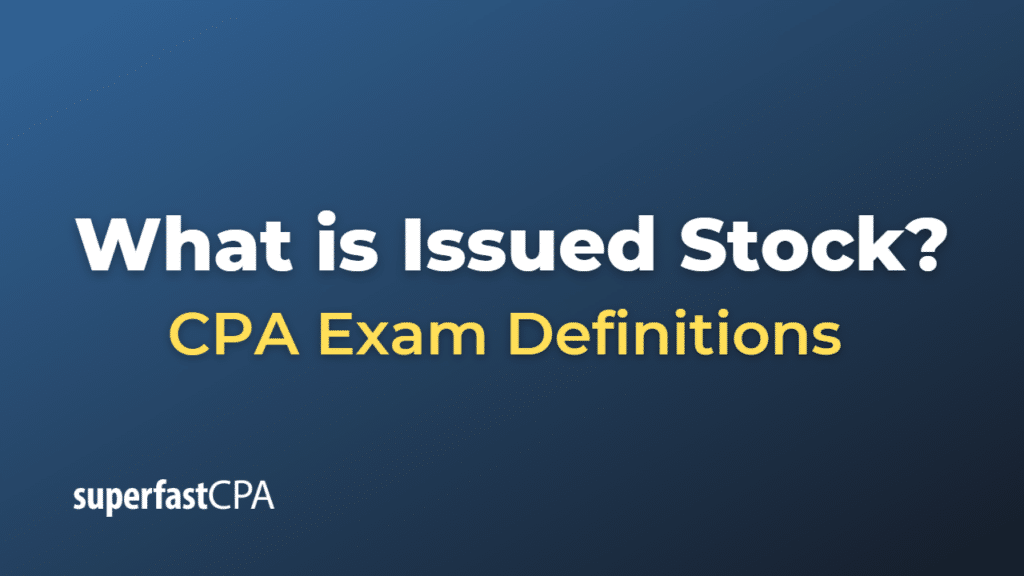Issued Stock
Issued stock refers to the total number of shares in a corporation that have been authorized and subsequently sold to investors, including both private individuals and institutions. These shares represent ownership in the corporation and may include both common and preferred shares.
The shareholders, or owners of issued stock, have the right to vote at annual meetings and are eligible to receive any declared dividends. Issued shares can also be sold by the owners to other investors on the open market.
It’s worth noting that the number of issued shares is different from the number of authorized shares. Authorized shares are the maximum number of shares that a corporation is legally permitted to issue according to its corporate charter, while issued shares are those that have actually been sold and are held by investors. Not all authorized shares need to be issued.
Furthermore, the issued stock can be divided into two categories:
- Outstanding shares: These are the shares currently held by all shareholders, including insiders (like directors and senior officers) and institutional investors.
- Treasury shares: These are the shares that the company has issued at some point, but later repurchased and held in its own treasury.
The sum of outstanding shares and treasury shares is equal to the total number of issued shares.
Example of Issued Stock
Let’s say that ABC Corporation is incorporated with an authorization to issue up to 2 million shares of common stock. However, ABC Corporation initially decides to issue only 1 million shares in an Initial Public Offering (IPO) to raise capital. These 1 million shares are referred to as the issued stock of ABC Corporation.
After a few years of operation, ABC Corporation decides to buy back 200,000 shares from the open market. These shares are now considered treasury stock. They are still counted as issued shares but are no longer outstanding shares. Therefore, ABC Corporation now has 1 million issued shares, composed of 800,000 outstanding shares and 200,000 treasury shares.
Later, if ABC Corporation needs more capital for expansion, it could decide to issue an additional 500,000 shares. This would increase the total issued stock to 1.5 million shares (1 million previously issued shares plus the 500,000 newly issued shares), which is still within its authorized limit of 2 million shares.
This example illustrates how a corporation can manage its capital structure by controlling the number of its issued shares. It also shows the difference between authorized shares, issued shares, outstanding shares, and treasury shares.












